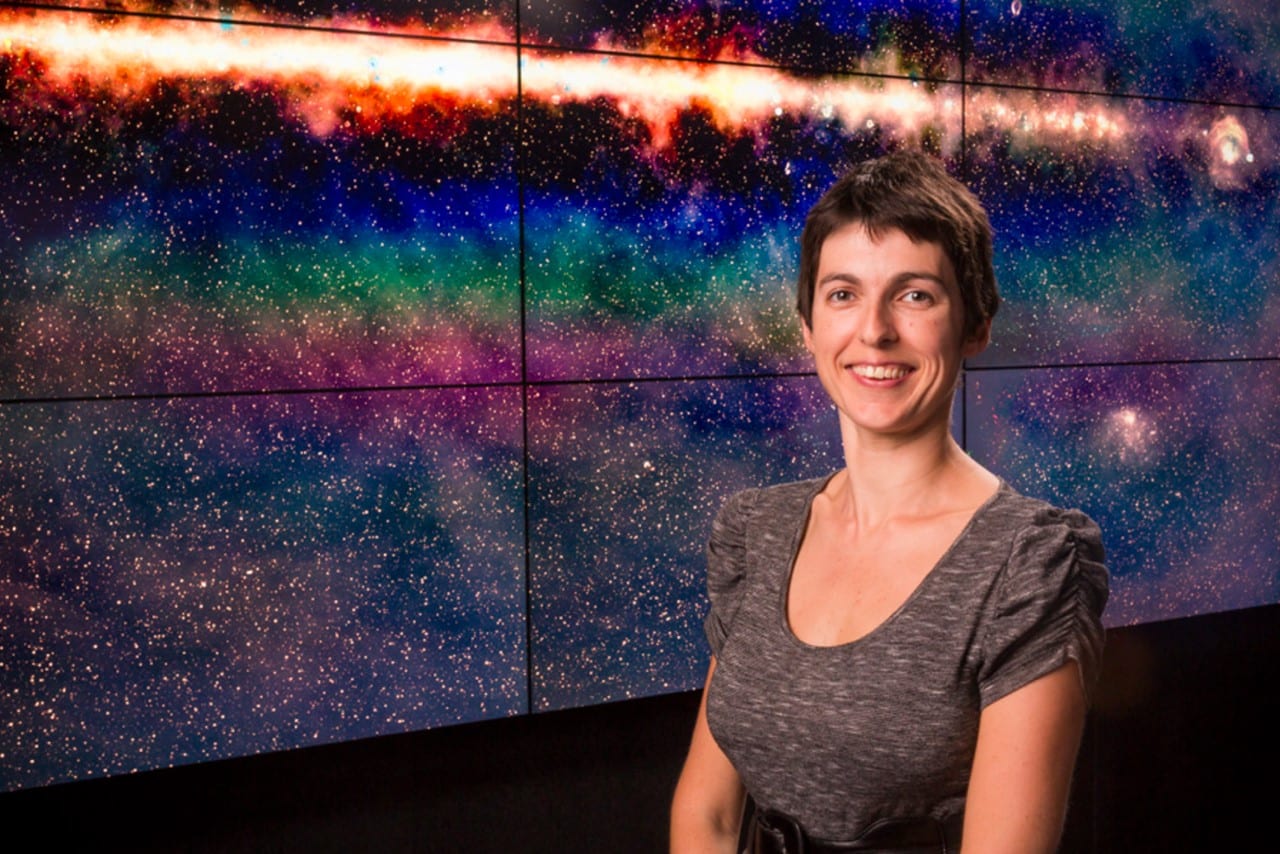A telescope located deep in the West Australian outback has shown what the Universe would look like if human eyes could see radio waves.
 Published today in the Monthly Notices of the Royal Astronomical Society, the GaLactic and Extragalactic All-sky MWA, or ‘GLEAM’ survey, has produced a catalogue of 300,000 galaxies observed by the Murchison Widefield Array (MWA), a $50 million radio telescope located at a remote site north-east of Geraldton.
Published today in the Monthly Notices of the Royal Astronomical Society, the GaLactic and Extragalactic All-sky MWA, or ‘GLEAM’ survey, has produced a catalogue of 300,000 galaxies observed by the Murchison Widefield Array (MWA), a $50 million radio telescope located at a remote site north-east of Geraldton.
Lead author Dr Natasha Hurley-Walker, from Curtin University and the International Centre for Radio Astronomy Research (ICRAR), said this was the first radio survey to image the sky in such amazing technicolour.
“The human eye sees by comparing brightness in three different primary colours – red, green and blue,” Dr Hurley-Walker said.
“GLEAM does better than that, viewing the sky in 20 primary colours.
“That’s much better than we humans can manage; it even beats the very best in the animal kingdom, the mantis shrimp, which can see 12 different primary colours,” she said.
GLEAM is a large-scale, high-resolution survey of the radio sky observed at frequencies from 70 to 230 MHz, observing radio waves that have been travelling through space—some for billions of years.
“Our team are using this survey to find out what happens when clusters of galaxies collide,” Dr Hurley-Walker said.
“We’re also able to see the remnants of explosions from the most ancient stars in our galaxy, and find the first and last gasps of supermassive black holes.”
MWA Director, Associate Professor Randall Wayth, from Curtin University and ICRAR, said GLEAM is one of the biggest radio surveys of the sky ever assembled.
“The area surveyed is enormous. Large sky surveys like this are extremely valuable to scientists and they’re used across many areas of astrophysics, often in ways the original researchers could never have imagined,” Associate Professor Wayth said.
Completing the GLEAM survey with the MWA is a big step on the path to SKA-low, the low frequency part of the international Square Kilometre Array (SKA) radio telescope to be built in Australia in the coming years.
“It’s a significant achievement for the MWA telescope and the team of researchers that have worked on the GLEAM survey,” Associate Professor Wayth said.
“The survey gives us a glimpse of the Universe that SKA-low will be probing once it’s built. By mapping the sky in this way we can help fine-tune the design for the SKA and prepare for even deeper observations into the distant Universe.”


